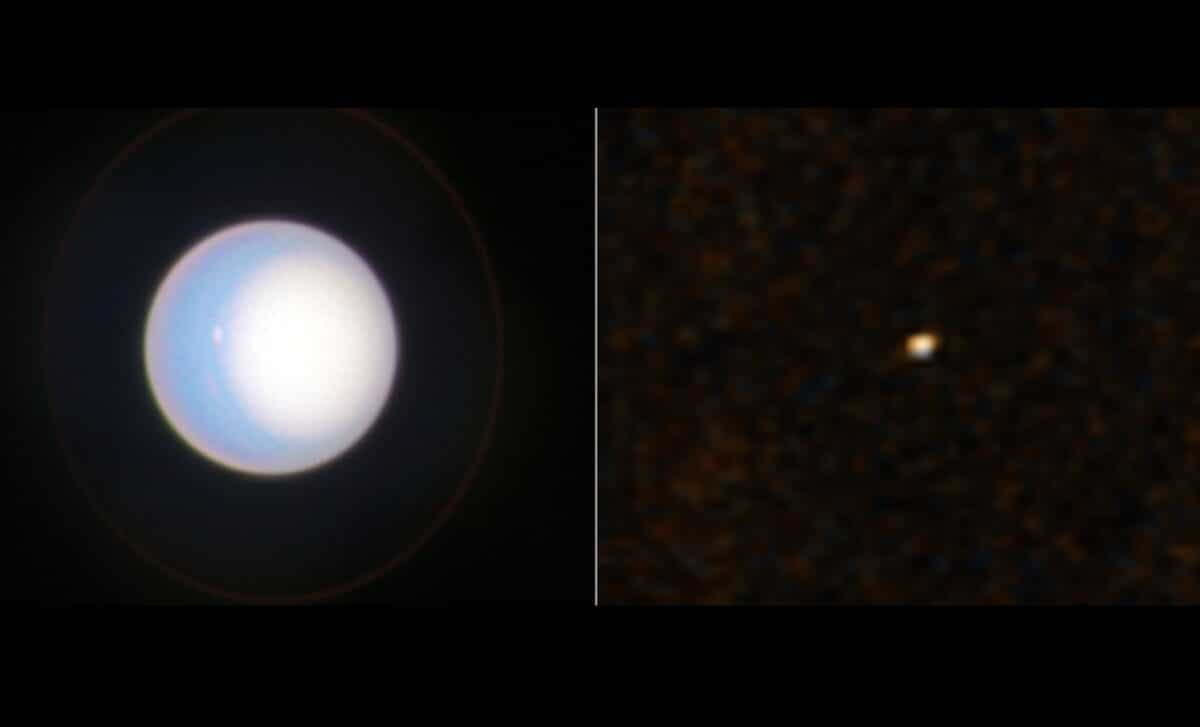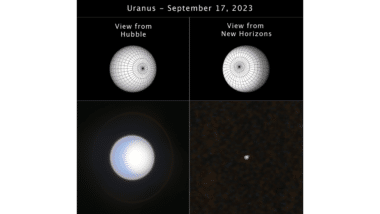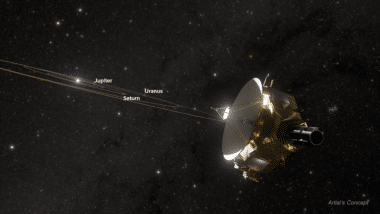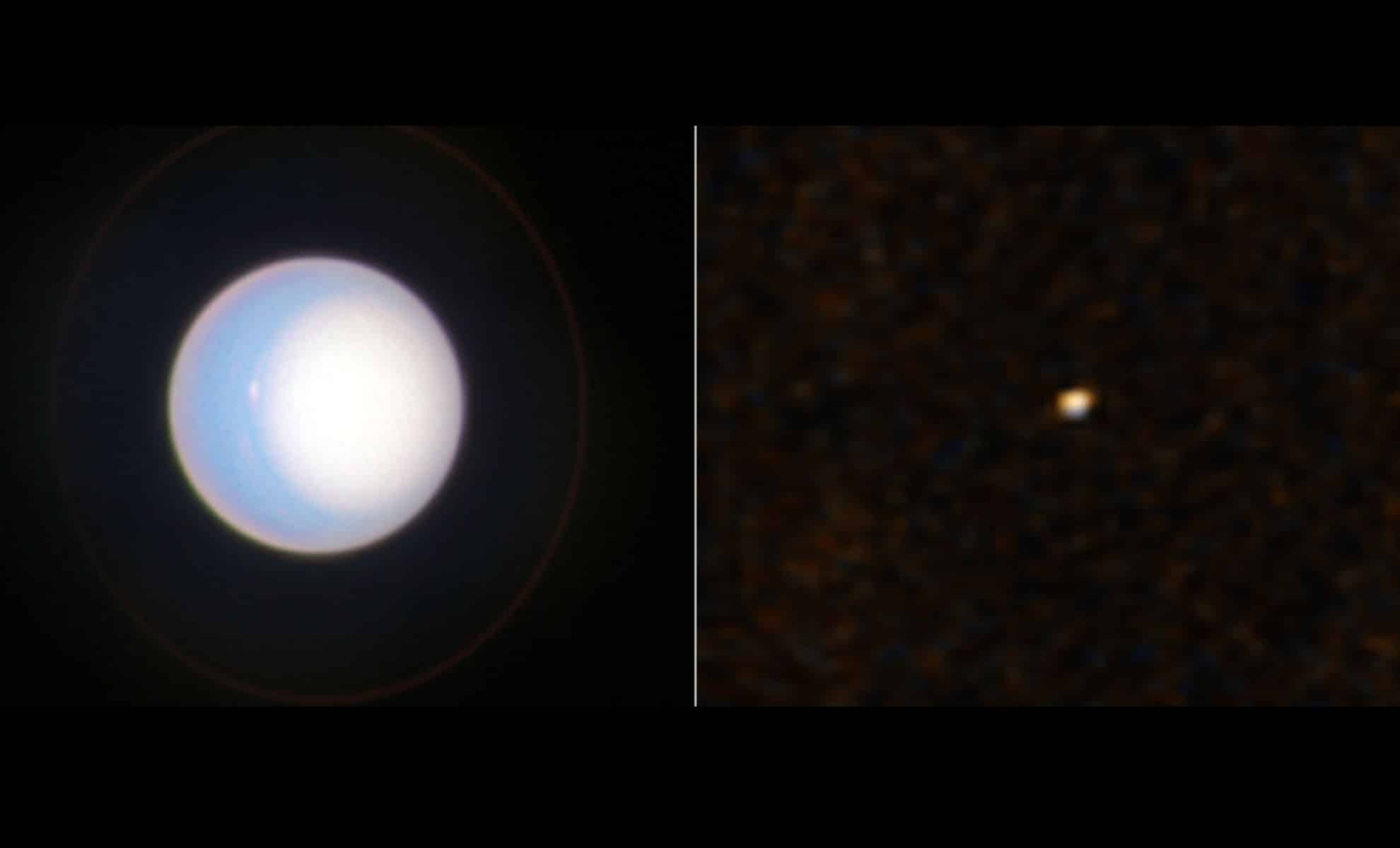NASA has combined the observational power of the Hubble Space Telescope and New Horizons to simultaneously observe Uranus, offering new insights into the study of distant exoplanets. By comparing Hubble’s detailed view with New Horizons’ distant perspective, astronomers are refining techniques for interpreting faint light from exoplanets.
NASA’s Hubble and New Horizons Collaboration Offers Groundbreaking Insights for Exoplanet Exploration

In a bold collaboration, NASA has brought together the powerful imaging capabilities of the Hubble Space Telescope and the New Horizons spacecraft to study Uranus in an entirely new way.
This joint mission is not just about better understanding Uranus, but also about refining the techniques astronomers will use to study exoplanets—planets orbiting stars beyond our solar system. By using Uranus as a stand-in for distant exoplanets, this project marks a significant step toward improving our understanding of the atmospheres and characteristics of worlds that are light-years away.
Two Unique Perspectives on Uranus
This simultaneous observation took place in September 2023, with Hubble observing Uranus from its low-Earth orbit, while New Horizons, stationed a staggering 6.5 billion miles away in the far reaches of the solar system, captured the planet from a completely different angle. Hubble, which has been providing stunning images of the solar system for decades, was able to resolve atmospheric details on Uranus, such as clouds and storms. At the same time, New Horizons, which has previously explored Pluto and Arrokoth, saw Uranus as just a tiny dot—much like how distant exoplanets appear through current observational technologies.
This combination of up-close and distant views allowed astronomers to directly compare two very different images of the same planet, offering a rare opportunity to refine their understanding of what tiny, distant dots—like those seen in exoplanet imaging—can tell us about planetary atmospheres and other features.
Samantha Hasler, lead scientist from MIT, explained the importance of this technique: “Uranus appears as just a small dot on the New Horizons observations, similar to the dots seen of directly-imaged exoplanets from observatories like Webb or ground-based observatories. Hubble provides context for what the atmosphere is doing when it was observed with New Horizons.” This dual view offers a practical test for interpreting the faint light that telescopes will capture from exoplanets in distant solar systems.

Why Uranus is the Perfect Exoplanet Proxy
One of the key reasons Uranus was selected for this project is its similarity to many known exoplanets. Uranus is a gas giant, much like the numerous exoplanets discovered so far, and it is distant enough from the Sun to present challenges similar to those faced when studying far-off worlds. By comparing detailed high-resolution images from Hubble with the much less detailed images from New Horizons, researchers hope to learn how distant exoplanets might behave and how their light might reflect under different conditions.
This project also highlighted an interesting discovery: Uranus appeared dimmer in the New Horizons images than predicted. According to Hasler, this could indicate that exoplanets might also appear dimmer during certain phases or under particular atmospheric conditions. “We found that Uranus was actually dimmer than predicted in the New Horizons data taken from a different viewpoint,” Hasler said. This has significant implications for exoplanet imaging—particularly when interpreting partial-phase views, where only a portion of the planet is illuminated by its host star.
What This Means for Future Exoplanet Missions
This collaboration between Hubble and New Horizons is just the beginning. The insights gained from studying Uranus will inform several major upcoming NASA missions, including the Nancy Grace Roman Space Telescope, scheduled to launch in 2027, and the Habitable Worlds Observatory, which is in its early planning stages. Both of these missions will focus on directly imaging exoplanets and studying their atmospheres in search of potential signs of habitability, such as biosignatures.
Alan Stern, principal investigator for New Horizons, emphasized the broader impact of this research: “These landmark New Horizons studies of Uranus from a vantage point unobservable by any other means add to the mission's treasure trove of new scientific knowledge, and have yielded surprising new insights into the worlds of our solar system.” As NASA prepares for the next generation of telescopes, these findings are helping astronomers refine their expectations for what they might see when peering at exoplanets orbiting other stars.

The Challenges of Exoplanet Imaging
Imaging exoplanets is notoriously difficult due to their immense distance from Earth and the bright light of their host stars, which often outshines the planets themselves. Telescopes like Hubble and James Webb are capable of detecting these distant worlds, but the images are usually nothing more than small dots. However, by carefully studying the light emitted or reflected by these planets, astronomers can learn about their atmospheres, surface conditions, and even potential habitability.
The observations of Uranus by Hubble and New Horizons provide valuable practice for interpreting these types of faint signals. By understanding how the light from Uranus changes—or in some cases, doesn’t change—throughout its rotation, astronomers are gaining insights into the dynamics of gas giant atmospheres. The fact that both Hubble and New Horizons observed relatively stable cloud features on Uranus helps confirm that the brightness of such planets may not vary significantly during their rotation, an important detail for future exoplanet observations.
Paving the Way for Future Discoveries
By combining two vastly different observational perspectives, NASA has developed a practical method for interpreting the faint, distant signals that astronomers will encounter when studying exoplanets. This collaboration between Hubble and New Horizons has provided vital information that will shape the way we study other planetary systems, particularly those with gas giants similar to Uranus.
The knowledge gained from these observations will be critical as astronomers prepare for future missions, such as the Nancy Grace Roman Space Telescope and the Habitable Worlds Observatory, which aim to directly image exoplanets and search for signs of life beyond Earth. As Samantha Hasler noted, “Studying how known benchmarks like Uranus appear in distant imaging can help us have more robust expectations when preparing for these future missions. And that will be critical to our success.”
NASA’s continued exploration of our own solar system, alongside the study of distant exoplanets, is bringing humanity closer to understanding the nature of planets both near and far, and perhaps even answering the age-old question of whether we are alone in the universe.



